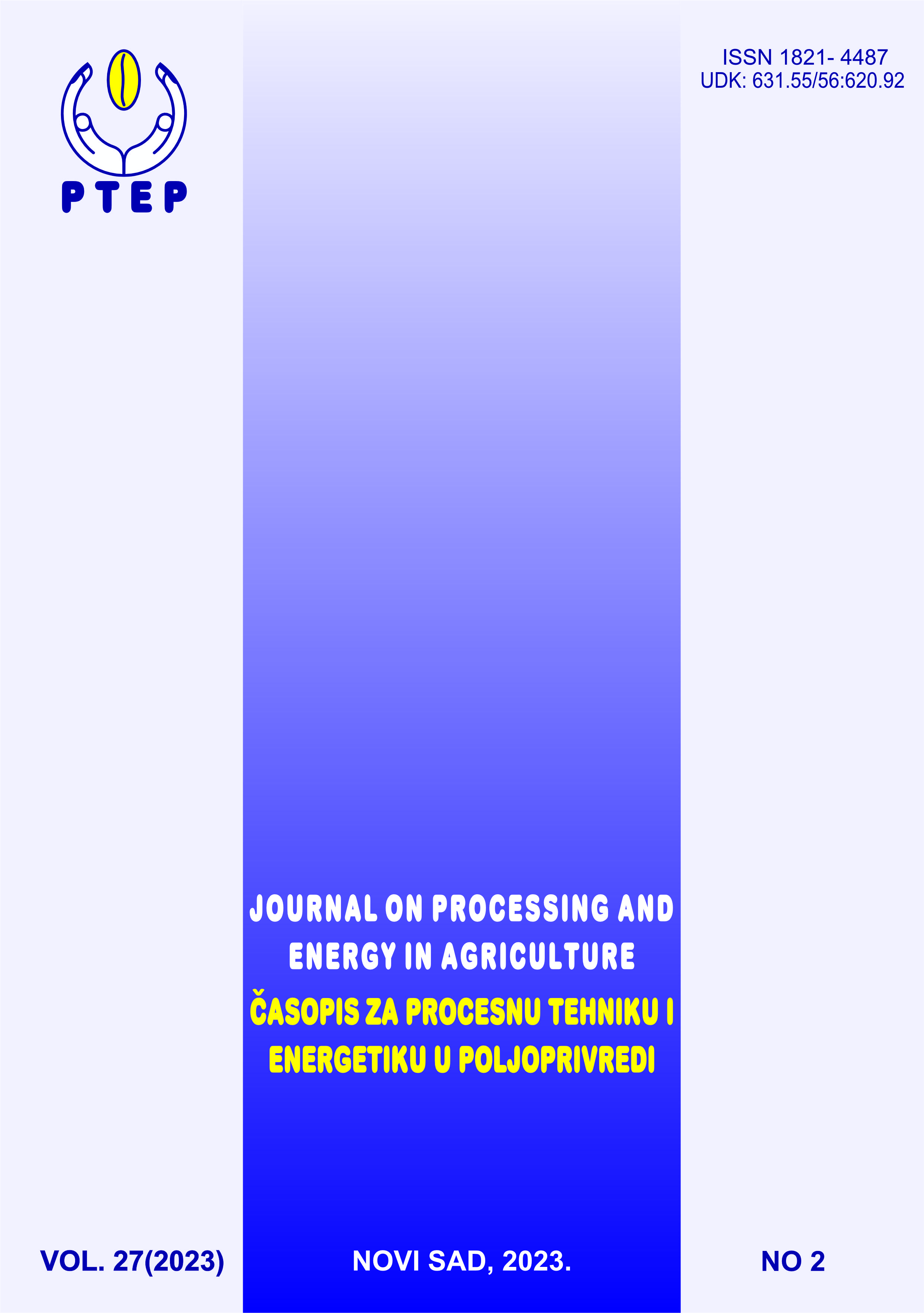UTICAJ FITOPATOGENIH GLJIVA NA PARAMETRE KVALITETA SEMENA BORANIJE U PETOGODIŠNJEM PERIODU
Sažetak
Boranija zbog svoje nutritivne vrednosti spada u najvažnije mahunarke u Srbiji. U ovom radu su praćeni parametri kvaliteta dve sorte boranije (GB1 i GB2) na teritoriji Smederevske Palanke. Energija klijanja i ukupna klijavost bile najbolje u prvoj posmatranoj godini i iznosile su 63% i 88% za GB1, respektivno. Za GB2 energija klijanja i ukupna klijavost (2018) bile su 71% i 75%, respektivno. U 2020. godini utvrđen je značajan pad ukupne klijavosti i iznosio je 75% za GB1 i 67% za GB2 (p<0,05). Najmanja energija klijanja i ukupna klijavost dobijena je u poslednjoj posmatranoj godini (2022) kod oba genotipa i statistički zna;ajno su povećane infekcije sa Alternaria sp. i Fusarium sp. Detekcija fitopatogenih gljiva je sprovedena metodom filter papira i krompir dekstroznog agara. Prisustvo Alternaria sp. detektovana je za oba genotipa GB1 i GB2 u rasponu od 2-3%; Fusarium sp. iznosio je 3% (2018). U poslednjoj posmatranoj godini utvrđen je veći procenat obolelog semena (5-6%) sa Alternaria sp. i Fusarium sp. Druge fitopatogene gljive su detektovane su kod oba genotipa: Aspergilus sp. (1-3%), Penicillium sp. (1-4%), Rhizopus sp. (1-3%) i Rhizoctonia solani (2-3%). Vlaga semena je iznosila u rasponu 8,5-10,9 za oba genotipa (p>0,05). Uticaj fitopatogenih gljiva na boraniju ogledao se u smanjenju ukupne klijavosti, a samim tim i kvaliteta semena i prinosa.
Reference
Assefa, T., Assibi Mahama, A., Brown, A. V., Cannon, E. K., Rubyogo, J. C., Rao, I. M., Blair, M. W., & Cannon, S. B. (2019). A review of breeding objectives, genomic resources, and marker-assisted methods in common bean (phaseolus vulgaris L.). Molecular Breeding, 39(2). https://doi.org/10.1007/s11032-018-0920-0
Del Buono, D. (2021). Can biostimulants be used to mitigate the effect of anthropogenic climate change on agriculture? it is time to respond. Science of The Total Environment, 751, 141763. https://doi.org/10.1016/j.scitotenv.2020.141763
International Seed Testing Association. International Rules for Seed Testing (2020). ISTA Basserdorf, CH. https://www.seedtest.org/en/publications/international-rules-seed-testing.html
Ketta, H. A., & Hewedy, O. A. (2021). Biological control of phaseolus vulgaris and Pisum sativum root rot disease using trichoderma species. Egyptian Journal of Biological Pest Control, 31(1). https://doi.org/10.1186/s41938-021-00441-2
Yoder, W. (2005). Book review: D.K. Arora, ed. fungal biotechnology in agricultural, Food & Environmental Applications, Marcel Dekker, NY, 2004, 509 pp. Mycopathologia, 159(3), 475–477.
Marcenaro, D., & Valkonen, J. P. (2016). Seedborne pathogenic fungi in common bean (phaseolus vulgaris cv. Inta Rojo) in Nicaragua. PLOS ONE, 11(12).
Rules of the quality of seeds of agricultural plants (Official Gazette of the SFRY", no. 47/87). Republic of Serbia.
Silvestro, L. B., Stenglein, S. A., Forjan, H., Dinolfo, M. I., Arambarri, A. M., Manso, L., & Moreno, M. V. (2013). Occurrence and distribution of soil fusarium species under wheat crop in zero tillage. Spanish Journal of Agricultural Research, 11(1), 72. https://doi.org/10.5424/sjar/2013111-3081
Statistical Yearbook оf the Republic of Serbia (2020). Statistical Office of the Republic of Serbia, Belgrade.
Taboada, G., Abán, C. L., Mercado Cárdenas, G., Spedaletti, Y., Aparicio González, M., Maita, E., Ortega-Baes, P., & Galván, M. (2022). Characterization of fungal pathogens and germplasm screening for disease resistance in the main production area of the common bean in Argentina. Frontiers in Plant Science, 13. https://doi.org/10.3389/fpls.2022.986247
Todorović, J., Vasić, M., & Todorović, V. (2008): Beans and green beans. Institute of Agriculture and Vegetables, Novi Sad- Banja Luka. 333str. ISBN 987-99955-24-61-6
Toghueo, R. M., Eke, P., Zabalgogeazcoa, Í., de Aldana, B. R., Nana, L. W., & Boyom, F. F. (2016). Biocontrol and growth enhancement potential of two endophytic trichoderma spp. from Terminalia catappa against the causative agent of common bean root rot (fusarium solani). Biological Control, 96, 8–20. https://doi.org/10.1016/j.biocontrol.2016.01.008
Upadhyaya, H. D., Narsimha, R. K., Vetriventhan, M., Murali, K. G., Irshad, A. M., Manyasa, E., Thimma, R. M., & Singh, S. K. (2017). Geographical Distribution, diversity and gap analysis of East African sorghum collection conserved at the Icrisat Genebank. Australian Journal of Crop Science, 11(04), 424–437. https://doi.org/10.21475/ajcs.17.11.04.pne330
Waller, J. M., Lenné, J. M., & Waller, S. J. (2001). Landmarks in plant pathology. Plant Pathologist's Pocketbook, 1–3. https://doi.org/10.1079/9780851994581.0001
Yoder, W. (2005). Book review: D.K. Arora, ed. fungal biotechnology in agricultural, Food & Environmental Applications, Marcel Dekker, NY. 159(3), 475–477. https://doi.org/10.1007/s11046-005-1231-7

